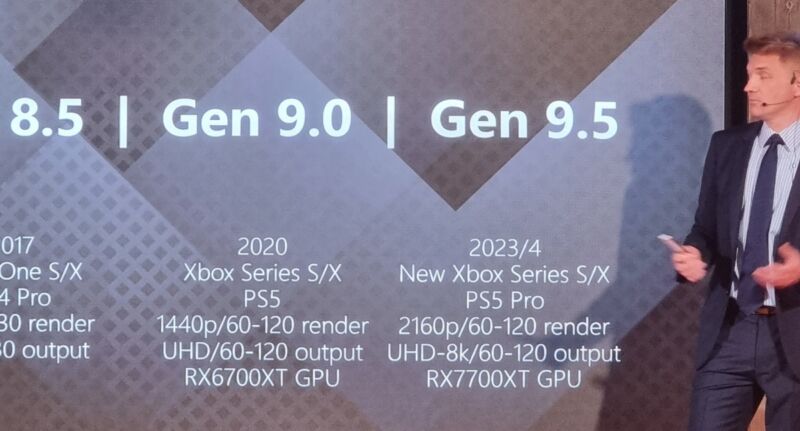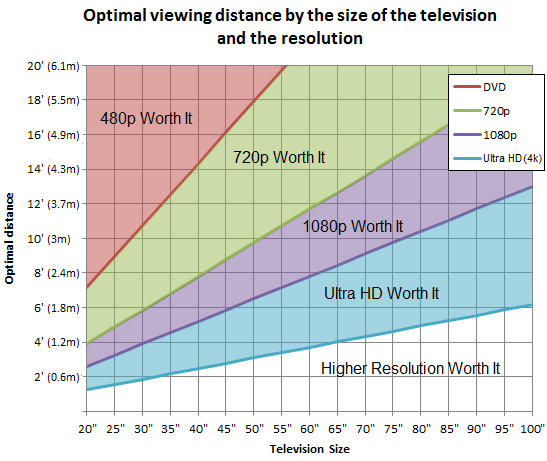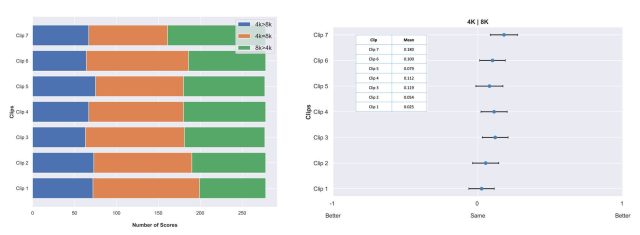

Polish gaming site PPL reports on a recent public presentation by Chinese TV and electronics maker TCL. Tucked away in a slide during that presentation is a road map for what TCL sees as "Gen 9.5" consoles coming in 2023 or '24. Those supposed consoles—which the slide dubs the PS5 Pro and "New Xbox Series S/X"—will be capable of pushing output at 8K resolution and up to 120 frames per second, according to TCL's slide.
First off, there's little reason to believe that a lesser-known TV manufacturer has leaked the first official word of Sony and Microsoft's next console plans. As GamesBeat's Jeff Grubb points out, you can tell TCL is speculating on console makers' plans "because they put the information up in big letters on a stage. If the company knew what it was talking about, then it would be under a non-disclosure agreement."
Still, speculation about a new mid-generation upgrade isn't completely far-fetched. After all, it was four years after the Xbox One and PS4 launched that we saw the Xbox One X and PS4 Pro, which offered their own resolution bumps over their predecessor consoles.
Since we're speculating anyway, it's worth asking the question: Is there any real value in a console that can output at 8K resolution? And are gamers going to need to upgrade to an 8K-capable TV in the foreseeable future?
Diminishing returns
The answer to that first question depends largely on the screen size and the viewing distance for your gaming setup. Those variables determine the "angular resolution" of an image, i.e., how many pixels can be squeezed into each degree of your vision.
A person with 20/20 vision generally can't discern visual details that measure smaller than 1/60th of a degree of angular resolution on their retina. Using that heuristic, display resolutions beyond 4K only become "worth it" for displays 65 inches and above if you're sitting 4 feet or less from the screen, according to an analysis by RTINGS.com. That's pretty cramped for most living rooms.

A graph showing where most people can discern a difference in different display resolutions, based on screen size and viewing distance.
More rigorous studies of how viewers perceive visual detail also suggest limited advantages in moving from 4K to 8K displays. TechHive's Scott Wilkinson detailed one study in 2020, a double-blind test led by Warner Bros., which asked participants to rate the relative quality of a number of film clips rendered in both 4K and 8K. That test got results from nearly 140 participants with a variety of visual acuity levels sitting at either five or nine feet away from an 88-inch OLED screen.
The study set up a subjective scale for participants to rate the two different versions of each clip: "same" (0); "slightly better" (+1); "better" (+2); and "much better" (+3) (If the 4K clip was judged better, the results noted a negative value). On average, the participants rated the 8K clips just 0.252 points better than their 4K counterparts. While that is technically an improvement, it's one that gets you only a quarter of the way to "slightly better" on the study's subjective scale.
What's more, a slight majority of participants watching six of the seven clips said both resolutions looked the same; they literally couldn't tell the difference. A significant minority of participants also said the 4K image looked better, which could suggest they were guessing.

Who’s in the market?
Right now, 8K TVs are an expensive niche, with high-end displays running close to $30,000. Given that, and the relative dearth of 8K-ready content, it's not surprising that manufacturers shipped fewer than 100,000 8K-capable TVs worldwide in the last quarter of 2021, according to Omdia Research. And while prices will no doubt come down, Omdia sees 8K sets in just over 2.6 million households worldwide by 2026, and "no convincing market demand of further 8K service development" worldwide.In other words, we might finally be hitting the point where the law of diminishing returns will finally force console manufacturers and game makers to stop chasing more and more pixels as a selling point. But that doesn't mean there's no space for improved pixel densities in gaming. PC players, who routinely sit just a foot or two from increasingly large monitors, could probably benefit from at least one more doubling of the linear pixel density in their displays.
And let's not forget VR displays, which routinely sit just a couple of inches from the player's eyes. Oculus founder Palmer Luckey told Ars back in 2013 that a VR headset would need to generate an 8K "per eye" resolution "to get to the point where you can't see pixels. And to get to the point where you couldn't see any more improvements, you'd need several times that." How's that for a "retina display"?
Listing image by RTING.com

Post a Comment